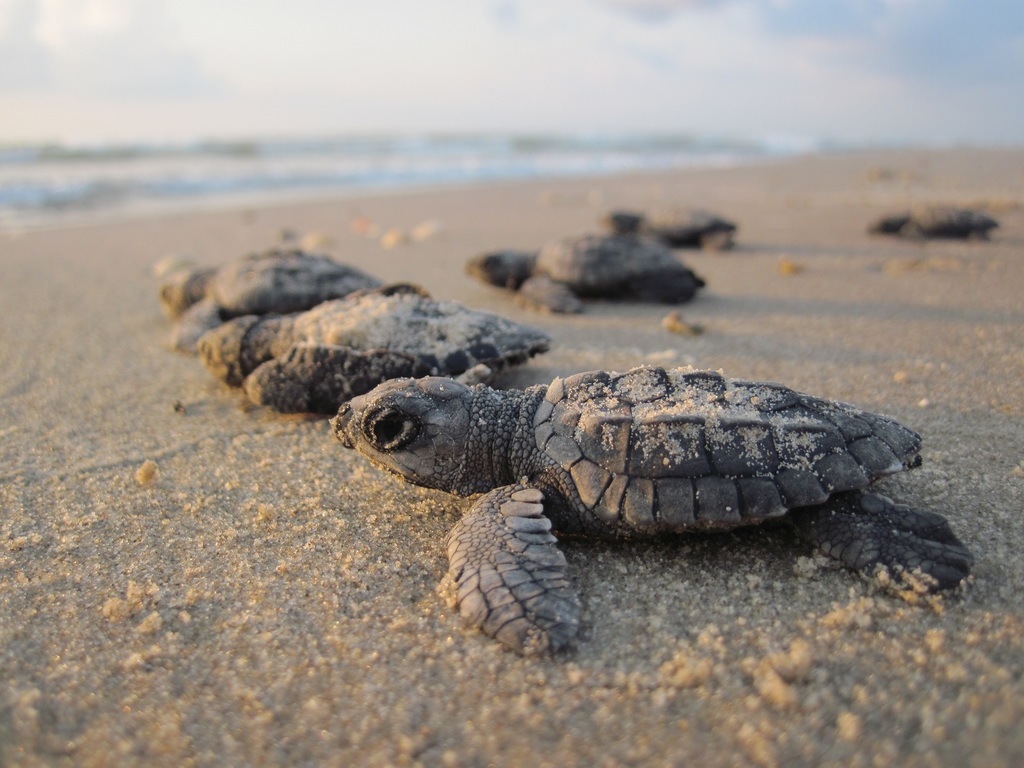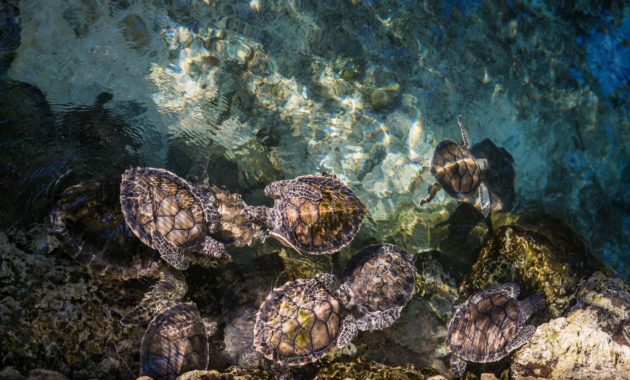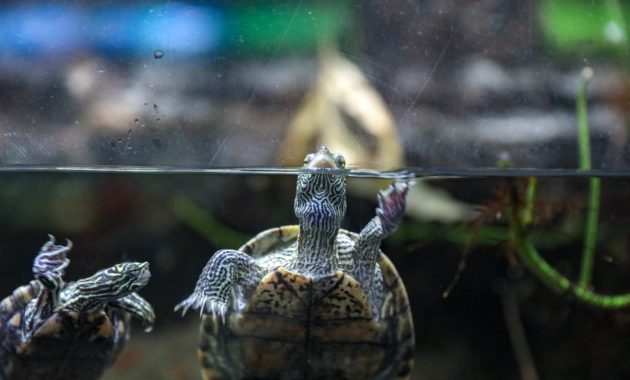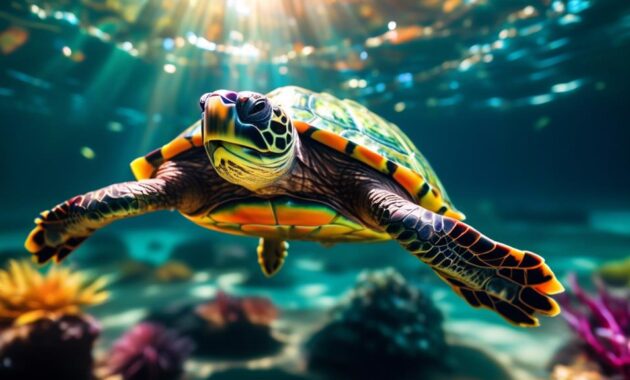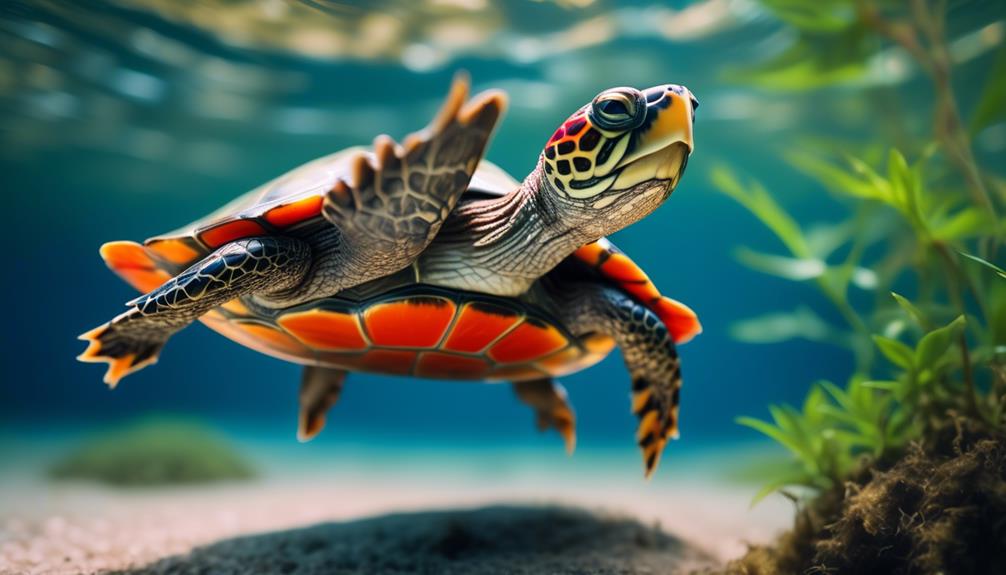
Did you know that the Florida Red-Belly Turtle is considered one of the rarest and most colorful turtle species in North America?
With its striking red stripes and vibrant patterns, it is truly a sight to behold.
But there is more to this fascinating creature than just its beauty.
From its unique habitat and diet to its intriguing behavior and conservation status, there is a wealth of information waiting to be uncovered.
So, if you're curious to learn more about this captivating turtle and discover the secrets of its existence, then prepare yourself for an adventure into the world of the Florida Red-Belly Turtle.
Key Takeaways
- The Florida Red-Belly Turtle is a medium-sized semi-aquatic turtle with distinctive red stripes on its carapace and a variable red and black pattern on its plastron.
- It is found in the Okefenokee Swamp in southern Georgia and throughout the Florida peninsula, preferring habitats with abundant vegetation.
- The turtle requires specific care and environment, including a basking spot with a heat lamp and UVB light bulb, deep water for swimming, and a minimum tank size of 90 gallons for a single adult turtle.
- Its diet consists of non-toxic aquatic plants, commercial pelleted food, fruits, and vegetables, and it can be housed with other compatible turtle breeds.
Description and Characteristics
The Florida Red-Belly Turtle is a medium-sized semi-aquatic turtle known for its distinctive features and attractive colors. This vibrant turtle has broad red stripes on its carapace and a variable red and black pattern on its plastron. Its jaw is characterized by a serrated pattern and a deep notch with cusps on the upper jaw. Thin yellow lines streak across its head, forming an arrow-like shape.
These unique colors and markings make the Florida Red-Belly Turtle a beautiful sight to behold. With a lifespan of 26 years, this turtle can be found in the Okefenokee Swamp in southern Georgia, as well as throughout the Florida peninsula. It inhabits various aquatic environments, including lakes, sloughs, creeks, marshes, ponds, rivers, and ditches, preferring areas with abundant vegetation.
Habitat and Range
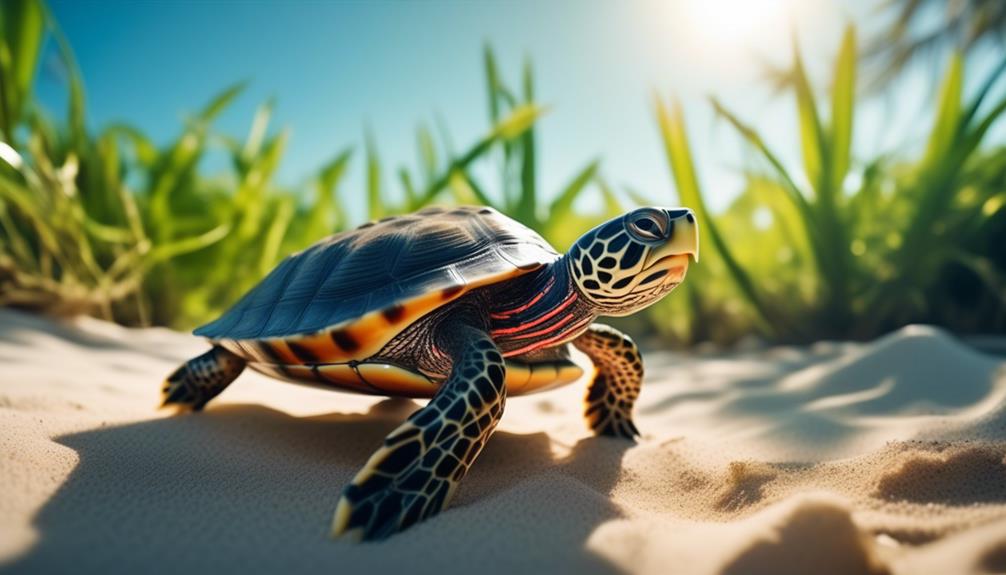
The Florida Red-Belly Turtle can be found in a variety of aquatic habitats throughout its range, from the Okefenokee Swamp in southern Georgia to the Florida peninsula. It inhabits lakes, sloughs, creeks, marshes, ponds, rivers, and ditches, preferring habitats with abundant vegetation. The range of the Florida Red-Belly Turtle extends southward through the Florida peninsula. To provide a visual representation of its habitat and range, here is a table:
| Habitat | Range |
|---|---|
| Okefenokee Swamp | Southern Georgia |
| Lakes | Florida peninsula |
| Sloughs | Apalachicola, Florida |
| Creeks | Throughout Florida peninsula |
| Marshes, ponds, rivers | Westward to Apalachicola, Florida |
The Florida Red-Belly Turtle is well adapted to its diverse range of aquatic habitats, making it a fascinating and unique species to discover.
Care and Environment
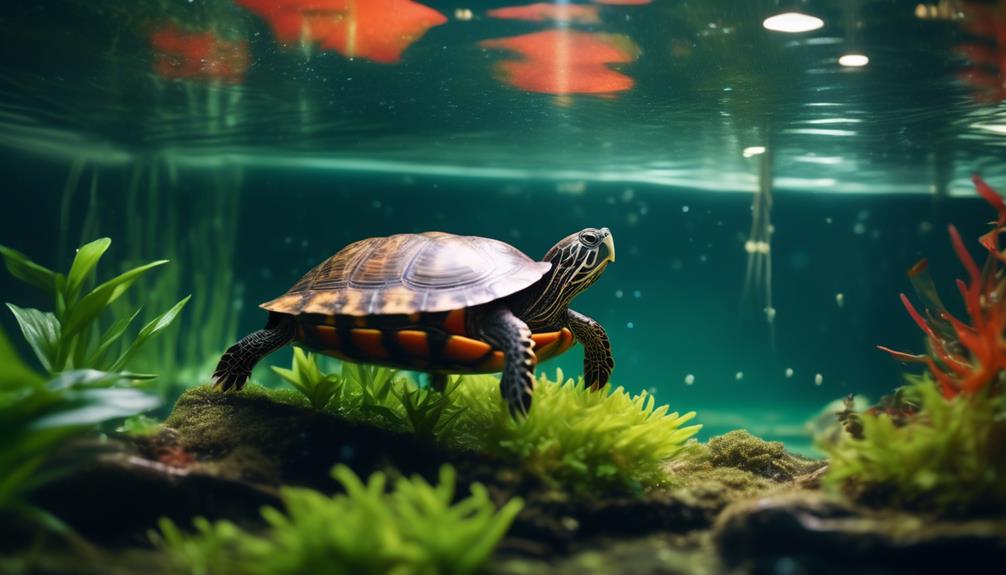
To properly care for a Florida Red-Belly Turtle, it's important to create an appropriate environment that mimics its natural habitat. Here are three key aspects to consider:
- Basking spot: Provide a designated area with a heat lamp and UVB light bulb for the turtle to bask and regulate its body temperature.
- Deep water: Ensure the turtle has access to deep water for swimming. A minimum tank size of 90 gallons is recommended for a single adult turtle.
- Ideal temperature range: Maintain the appropriate temperature for the air, basking spot, and water to ensure the turtle's well-being.
Diet and Behavior
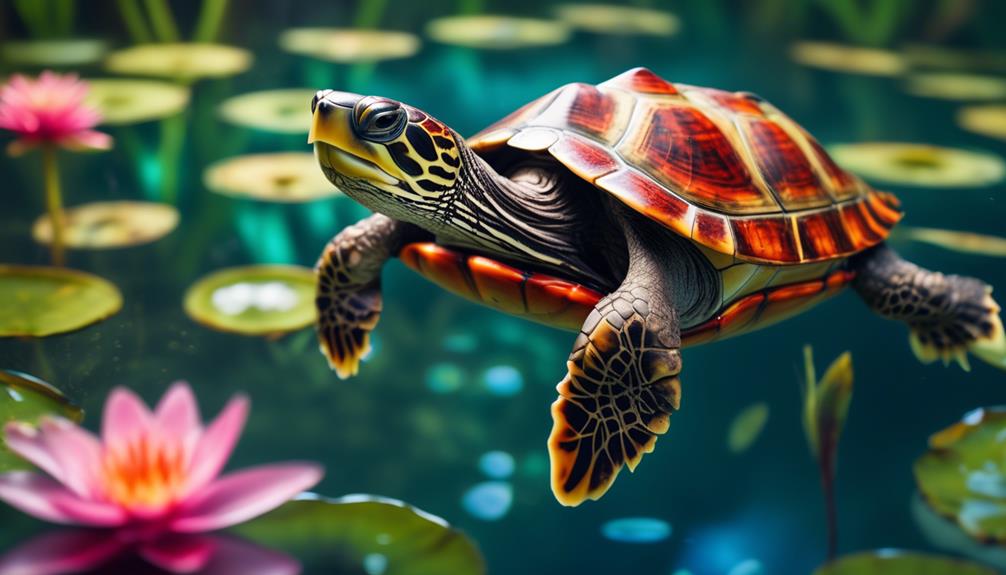
When caring for a Florida Red-Belly Turtle, it's essential to understand its diet and behavior. These turtles have a herbivorous diet, which includes non-toxic aquatic plants, commercial pelleted food, fruits, and vegetables. It's important to provide a balanced and varied diet to ensure their nutritional needs are met.
Additionally, Florida Red-Belly Turtles can be housed with other turtle breeds such as Cooters, Musk Turtles, Mud Turtles, Slider Turtles, Painted Turtles, and Map Turtles. However, it's crucial to note that captive-bred turtles are more comfortable and less likely to bite or scratch compared to wild-caught turtles.
Understanding their behavior and providing a suitable environment is key to ensuring their well-being and preventing any potential harm.
Comparison With Similar Turtle Breeds
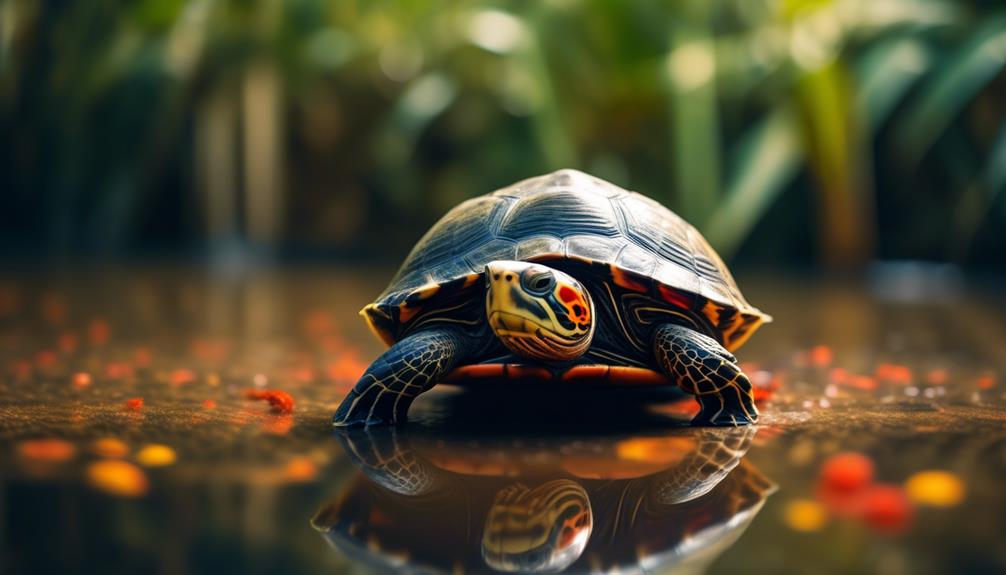
Understanding the diet and behavior of the Florida Red-Belly Turtle provides a foundation for comparing it to similar turtle breeds. When considering different turtle breeds, it's important to take into account their unique characteristics, habitat preferences, and care requirements.
Here are three key points to consider when comparing the Florida Red-Belly Turtle with similar breeds:
- Physical Appearance: The Florida Red-Belly Turtle stands out with its broad red stripes on the carapace and variable red and black pattern on the plastron. Its thin yellow lines streaked across the head form an arrow-like shape, making it visually distinctive.
- Habitat Range: While the Florida Red-Belly Turtle is found in the Okefenokee Swamp in southern Georgia and throughout the Florida peninsula, similar breeds like the Northern Red-Bellied Turtle and Alabama Red-Bellied Turtle have different ranges and habitats. This difference in distribution contributes to variations in their behavior and adaptation to different environments.
- Diet Preferences: While the Florida Red-Belly Turtle has a herbivorous diet consisting of non-toxic aquatic plants, commercial pelleted food, fruits, and vegetables, other turtle breeds may have different dietary preferences. Understanding these differences can help turtle enthusiasts provide appropriate nutrition for their pets.
Lifespan and Size
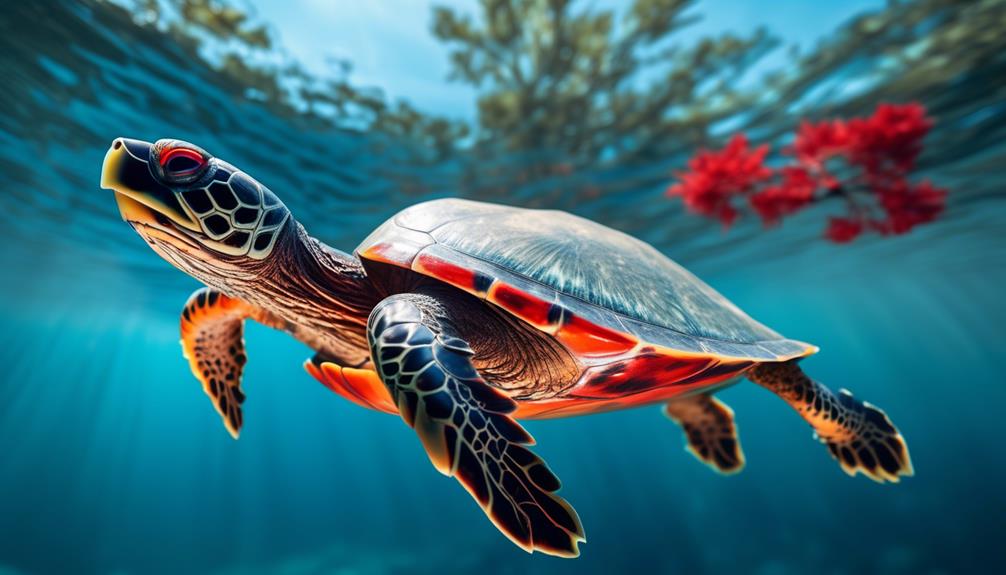
The Florida Red-Belly Turtle has a medium size and a lifespan of 26 years. As a semi-aquatic turtle, it can reach a carapace length of about 10 to 12 inches and a weight of up to 6 pounds. This size makes it a suitable pet for both indoor and outdoor enclosures.
When it comes to lifespan, the Florida Red-Belly Turtle can live for an average of 26 years, although some individuals have been known to live longer with proper care. It's important to provide them with a suitable environment, including a basking spot with a heat lamp and UVB light bulb, as well as deep water for swimming.
Breeding and Reproduction
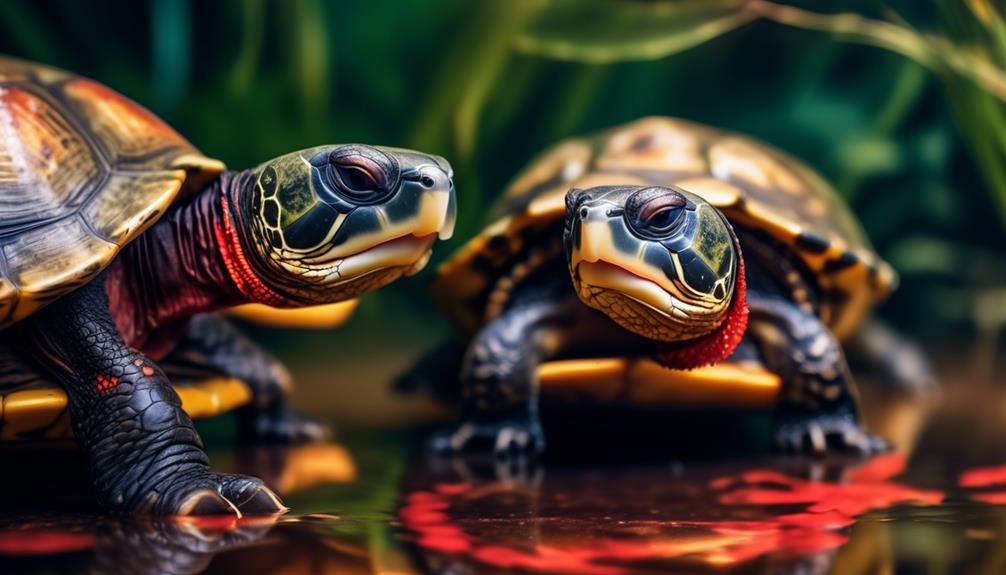
To successfully breed and reproduce Florida Red-Belly Turtles, it's important to provide them with the appropriate nesting conditions and a suitable environment. Here are three key factors to consider:
- Nesting site: Create a sandy area with loose soil for the female turtle to lay her eggs. Ensure the area is well-drained and away from potential disturbances.
- Incubation temperature: Maintain a consistent temperature of around 85 degrees Fahrenheit for the eggs to develop properly. Use a temperature-controlled incubator or a warm, shaded area outdoors.
- Incubation period: The eggs typically take around 85-100 days to hatch. Monitor the nest regularly, keeping it moist but not too wet, to ensure the eggs are healthy and developing as expected.
Threats and Conservation Status
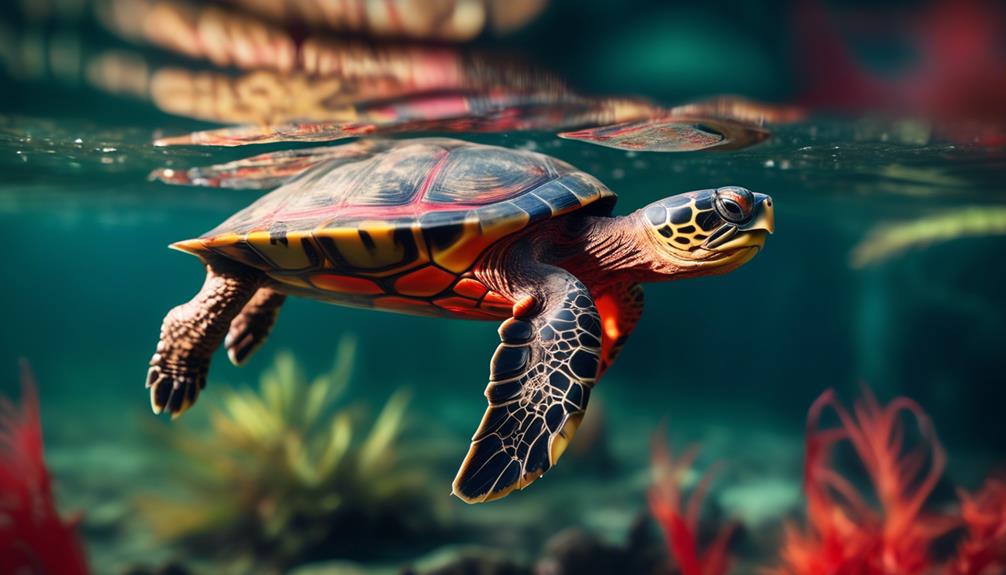
As we shift our focus to the subtopic of 'Threats and Conservation Status', it is crucial to address the challenges faced by the Florida Red-Belly Turtle in maintaining its population and habitat. This unique species faces several threats that put it at risk of decline. The main threats include habitat loss and degradation, pollution, predation, and collection for the pet trade. The destruction of wetlands and the draining of water bodies for development purposes directly impact the turtle's habitat. Pollution from agricultural runoff and chemicals also pose a significant threat. Predators such as raccoons and snakes prey on the eggs and hatchlings of the Florida Red-Belly Turtle. Additionally, the collection of these turtles from the wild for the pet trade further exacerbates their vulnerability. In terms of conservation status, the Florida Red-Belly Turtle is currently listed as a species of special concern in Florida. Efforts are being made to protect its habitats through wetland conservation and restoration projects. Raising awareness about the importance of preserving these turtles and their habitats is crucial for their long-term survival.
| Threats | Conservation Status |
|---|---|
| Habitat loss and degradation | Species of special concern in Florida |
| Pollution | |
| Predation | |
| Collection for pet trade |
Interesting Facts
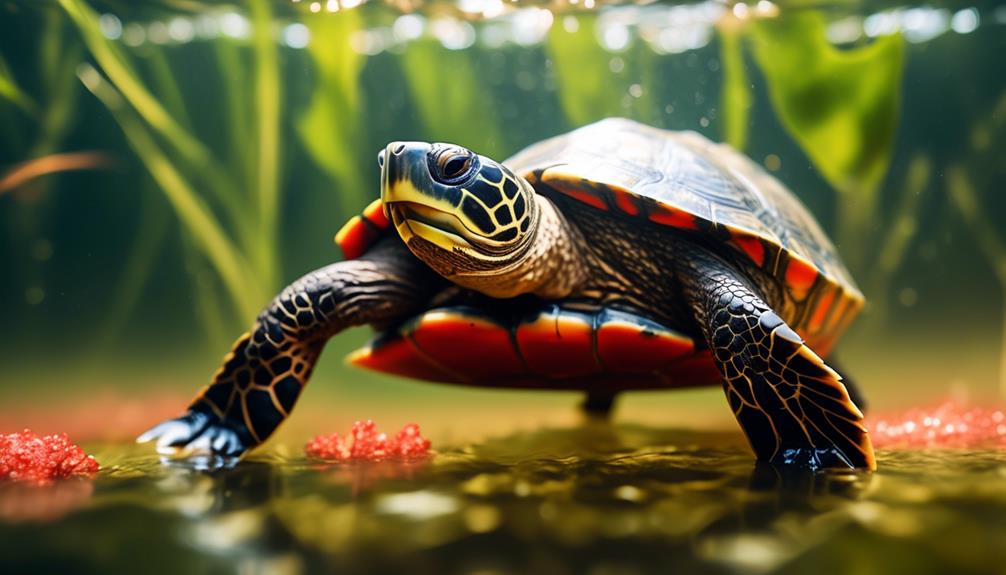
Did you know that the Florida Red-Belly Turtle is known for its striking red and black patterns on its shell and unique arrow-like markings on its head? Here are some interesting facts about this colorful turtle:
- Vibrant Colors: The Florida Red-Belly Turtle boasts attractive and distinctive colors, with broad red stripes on its carapace and a variable red and black pattern on its plastron.
- Arrow-like Markings: One of its most distinguishing features is the thin yellow lines streaked across its head, forming an arrow-like shape. This gives the turtle a truly unique appearance.
- Medium-sized and Long-lived: These semi-aquatic turtles have a lifespan of 26 years and grow to a medium size. They're a fascinating species to observe in their natural habitats.
The Florida Red-Belly Turtle is truly a rare and captivating creature, with its vibrant colors and arrow-like markings.
Tips for Keeping the Florida Red-Belly Turtle
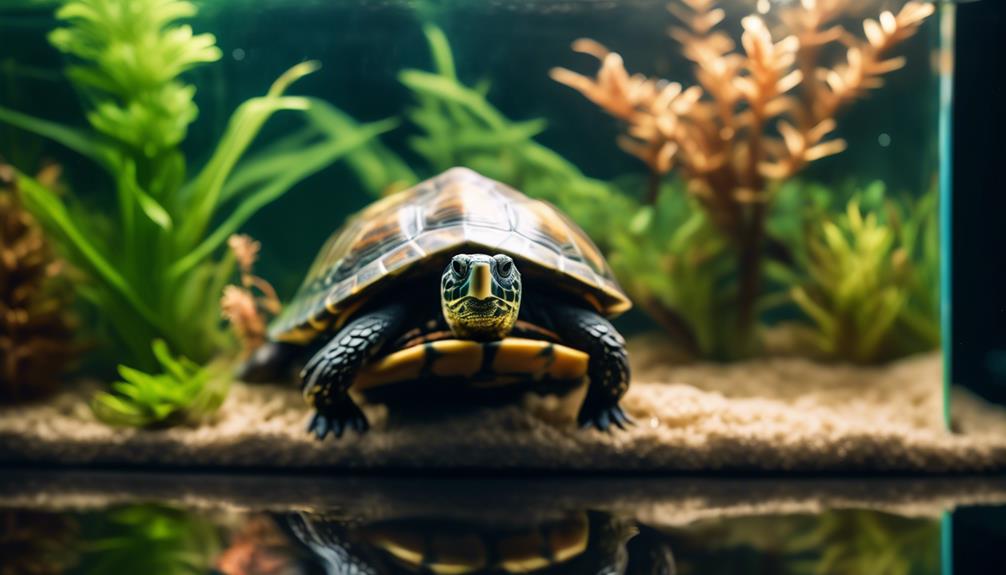
What are some essential tips for keeping the Florida Red-Belly Turtle as a pet?
When it comes to caring for this unique turtle, there are a few important factors to consider.
First, provide your turtle with an appropriate enclosure. This can be either an indoor or outdoor setup, but make sure it has a basking spot with a heat lamp and UVB light bulb, as well as deep water for swimming. The tank should be at least 90 gallons for a single adult turtle.
Additionally, maintain the ideal temperature range for air, basking, and water.
In terms of diet, the Florida Red-Belly Turtle is herbivorous and requires non-toxic aquatic plants, commercial pelleted food, fruits, and vegetables.
Lastly, consider getting a captive-bred turtle, as they tend to be more comfortable and less likely to bite or scratch.
Frequently Asked Questions
What Is the Population Size of the Florida Red-Belly Turtle in Its Natural Habitat?
The population size of the Florida Red-Belly Turtle in its natural habitat is unknown. But remember, taking turtles from the wild damages populations, so it's important to consider captive-bred turtles instead.
Are There Any Specific Regulations or Permits Required to Keep a Florida Red-Belly Turtle as a Pet?
You don't need any specific regulations or permits to keep a Florida Red-Belly Turtle as a pet. Just make sure to provide proper care and environment, including a basking spot, deep water, and a suitable tank size.
How Do Florida Red-Belly Turtles Interact With Humans in Their Natural Habitat?
Florida Red-Belly Turtles are not known to interact with humans in their natural habitat. They prefer to avoid human contact and retreat into the water when approached. It's important to respect their space and not disturb their natural behavior.
Do Florida Red-Belly Turtles Have Any Predators That Pose a Threat to Their Survival?
Yes, Florida Red-Belly Turtles have predators that pose a threat to their survival. Raccoons, otters, alligators, and large birds like herons and egrets are known to prey on their eggs and young turtles.
Are There Any Known Diseases or Health Issues That Commonly Affect Florida Red-Belly Turtles?
There are several known diseases and health issues that commonly affect Florida Red-Belly Turtles. These include respiratory infections, shell rot, parasitic infections, and vitamin deficiencies. Regular veterinary check-ups and proper care can help prevent and treat these issues.
Are Red-Eared Slider Turtles Related to Florida Red-Belly Turtles?
Yes, red-eared slider turtles and Florida red-belly turtles belong to the same group. Both species are members of the Trachemys family and are known for their unique characteristics and behaviors. The fascinating world of redeared slider turtles is full of interesting facts and intriguing discoveries.
Conclusion
In conclusion, the Florida Red-Belly Turtle is a rare and colorful species that boasts captivating beauty with its striking red stripes and vibrant colors.
Found in the Okefenokee Swamp and throughout the Florida peninsula, this turtle thrives in habitats with abundant vegetation.
With proper care and a suitable environment, these magnificent creatures can be kept in indoor or outdoor enclosures.
By understanding their diet, behavior, and unique characteristics, we can ensure their well-being and contribute to their conservation.

